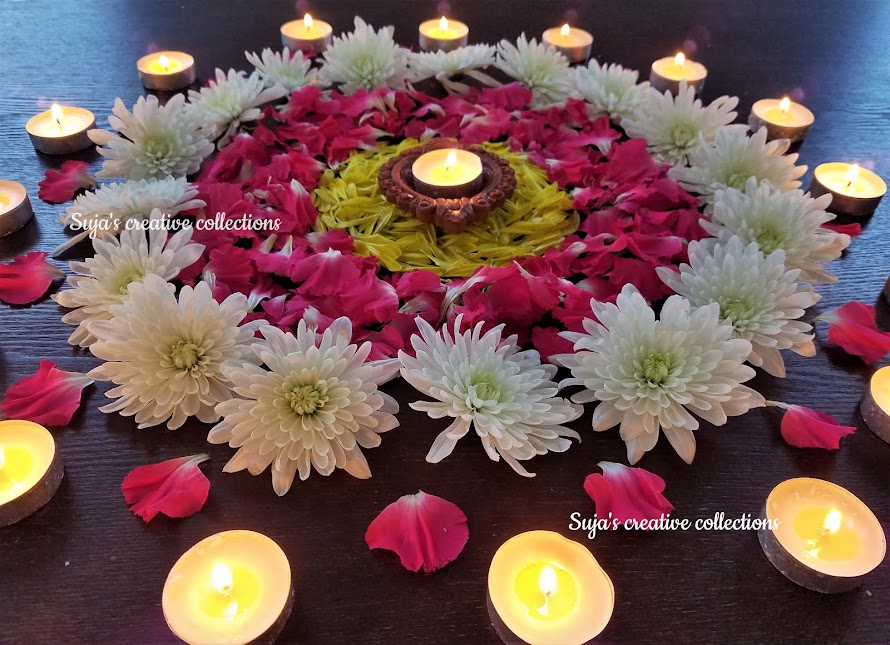The traditional life of the Warli reflects their interaction, or more precisely, their co-existence with nature. The Warli believe that everything in this world interacts: the actions of humans and the harmony of space.
Their extremely rudimentary wall paintings use a very basic graphic vocabulary: a circle, a triangle and a square. Their paintings were monosyllabic. The circle and triangle come from their observation of nature, the circle representing the sun and the moon, the triangle derived from mountains and pointed trees. Only the square seems to obey a different logic and seems to be a human invention, indicating a sacred enclosure or a piece of land.
The wall paintings are done only for special occasions such as weddings or harvests.
The central motive in these ritual paintings is surrounded by scenes portraying hunting, fishing and farming, festivals and dances, trees and animals. Human and animal bodies are represented by two triangles joined at the tip; the upper triangle depicts the trunk and the lower triangle the pelvis.
Their precarious equilibrium symbolizes the balance of the universe, and of the couple, and has the practical and amusing advantage of animating the bodies.




This blog wonderfully explains the beauty of warli art, one of India’s oldest tribal art forms. Known for its simple yet expressive style, it brings tradition and culture into modern spaces. If you’re looking to buy authentic and stylish Warli art online, Vibecrafts is the best choice. Their collection offers high-quality designs at affordable prices.
ReplyDelete
ReplyDeleteThis blog beautifully highlights the charm of warli art, one of India’s oldest and most expressive tribal art forms. It not only reflects heritage but also adds an ethnic touch to interiors. For those looking to buy authentic Warli art online, Vibecrafts is the best destination. Their collection is rich in design, quality, and affordability.
This comment has been removed by the author.
ReplyDeleteI absolutely love the warli art collection from VibeCrafts! The intricate tribal designs beautifully capture the simplicity of rural life. Each piece feels authentic and adds a cultural charm to modern interiors. Perfect blend of tradition and artistry — a must-have for anyone who appreciates Indian heritage!
ReplyDeleteThis is such an enlightening post! I love how clearly you laid out the fundamentals of warli art — from the simple geometric shapes to the deeper meaning behind each design. It’s amazing how minimalistic strokes can tell stories about daily life, nature, traditions, and community. Thanks for sharing such a beautiful overview; posts like this help more people appreciate the charm and cultural richness of Warli art. 🎨
ReplyDeleteWonderful blog on warli art! Your explanation of its cultural roots and storytelling is truly engaging. For beautifully crafted Warli-inspired wall décor that adds traditional charm to modern interiors, VibeCrafts provides stunning pieces to explore.
ReplyDelete